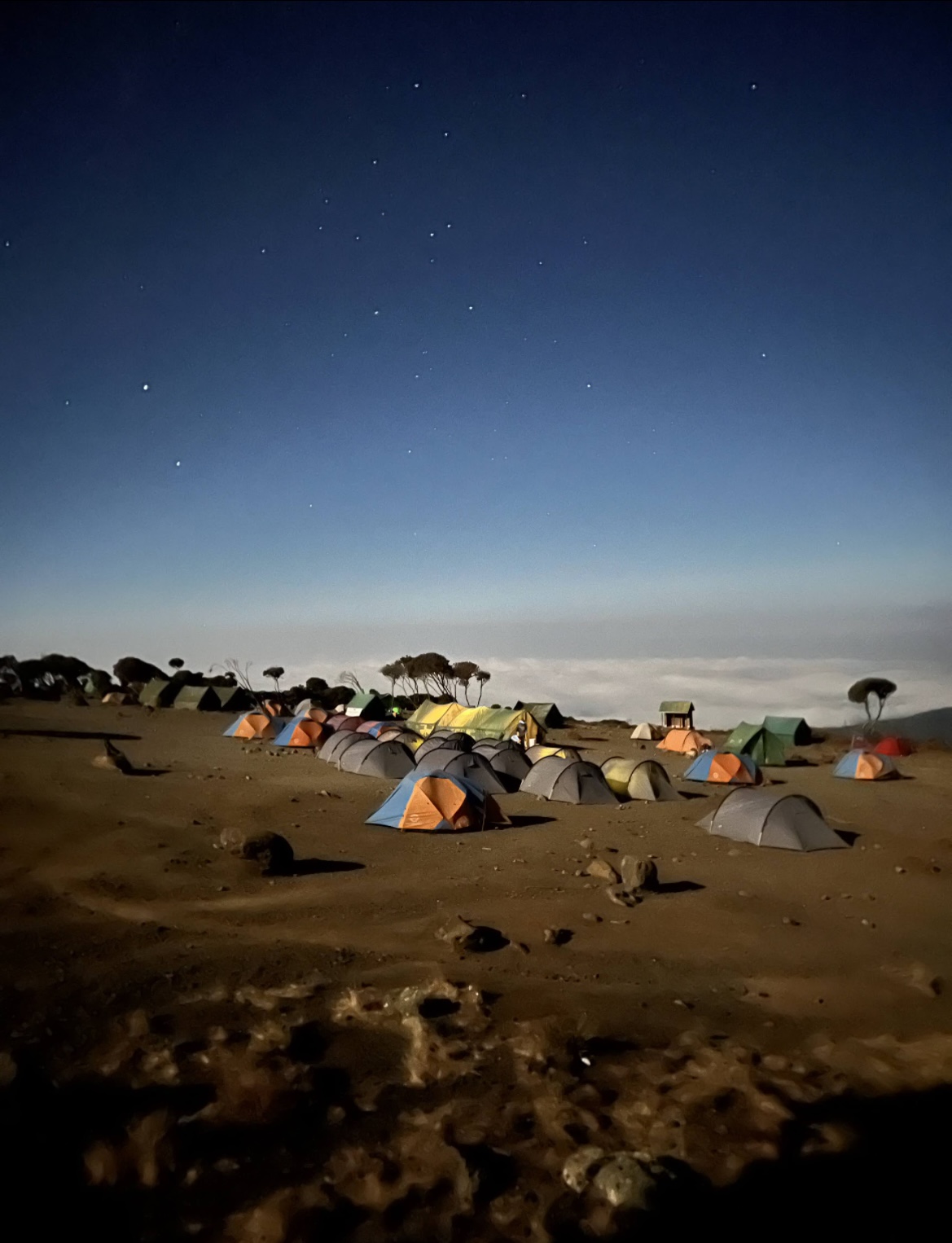
Travel Editor Pippa Kline recounts her experience of climbing Kilimanjaro
Climbing Kilimanjaro had never crossed my mind, until I saw that a group of Birmingham students would be taking on the challenge. I signed up on a whim, and for ten months raised money alongside the rest of the team for the important Meningitis Research Foundation. I trained by increasing my gym sessions, running regularly, and hiking in the UK – the only thing I could not truly prepare for was the altitude of Kilimanjaro, at 5,895 metres.
“I saw stars like I have never seen them before
Departure
Only as the departure approached did it begin to feel real. I had met the other Birmingham
students just a few times, both adding to my anxiety and excitement. We had an interesting journey to Tanzania, missing our connecting flight from Istanbul due to delays, meaning we had to wait 24 hours for the next flight. Finally arriving at the Tanzanian airport, we were a nine-hour coach journey away from Moshi, the village next to Kilimanjaro national park.
The Trek
Due to these delays, we had an intense start to the six-day trek. Our first day involved hiking much quicker than anticipated to make up for time, and trekking in the dark through the rainforest. Our breakfasts and dinners were held in a long tent where the amazing Tanzanian porters provided us with food and hot drinks. We slept in two-person tents, wearing more layers each night due to the increasingly cold temperatures.
Most days included six to ten hours of trekking, often accompanied by music from our speaker. Our route was challenging due to its constant ascending and descending, however this helped with acclimatisation. Above 3,000 metres I felt affected by the altitude; it was noticeably harder to breathe. At night, I saw stars like I have never seen them before, with absolutely no light pollution and I felt overwhelmed when we were able to see the Milky Way. Having no Tanzanian sim-card meant I did not have contact outside of the mountain, which I actually found refreshing and calming.
As the summit approached, there was a heightened anxiety among the group as we realised the real challenge was yet to come. We arrived at base camp at sunset, feeling elated. We had an hour an a half to rest before summiting – I and many others had not slept. I wore three layers of thermals, two fleeces, two jackets, a balaclava, hat, thermal gloves and ski gloves: minus 15 degrees celsius was predicted through the night. I had an 18-hour playlist I made to keep me motivated, or perhaps distracted. We set off at 11pm, guided by our head-torches.
Initial adrenaline and the surreality of the situation kept me going for the first hours. Our group started to struggle around 3.a.m when it had gotten so cold that our water camel-packs had frozen. The porters were amazing in supporting us. I felt incredibly nauseous and many of us were hallucinating from the lack of oxygen. On one of our breaks I was deliriously questioning why I had decided to put myself through this. I looked up at the stars and felt so close to them, and instantly felt like it was worth it. When the sun began to rise we started to feel warmer and regained some motivation.
“I felt overwhelmed when we were able to see the Milky Way
When at last we made it to the summit after the painful 10-hour trek through the night, we all
hugged each other and lay down on the rocks to rest. It was incredible seeing the sign telling us we had made it to the top of the world’s tallest free-standing mountain.
“We descended back through the rainforest and reached an altitude where breathing felt normal again
The Descent
The four-hour descent back to base camp was strenuous. The first thing we wanted to do was sleep, but we first had to eat and then hike to a lower camp to combat the altitude sickness. On the final morning, we had a send off of singing in Swahili and dancing with our guides and porters. We descended back through the rainforest and reached altitude where breathing felt normal again! Celebrations involved lunch at a local village and amazing first showers after a week, back at our hotel.
Climbing Kilimanjaro is the best thing I have done with my life, albeit the most physically and
mentally challenging. That being said, anyone with a decent level of fitness can complete this challenge, and I would highly recommend it!
Read more from Travel here:
One for the Bucket List: Ecuador
Comments